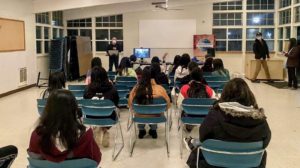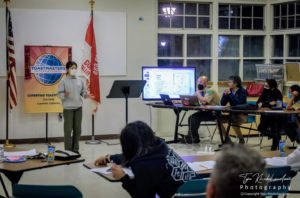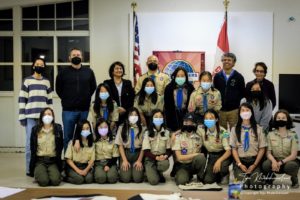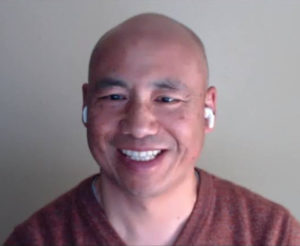A COVID-time Youth Leadership Program
That Challenged Us as well as the Youths
It was 7:00 pm, Friday, January 7, 2022, at a local park building, with 15 girls sitting in front of me and my copilot, Rovina Suri, DTM, joining via Zoom.

Each of the girls was asked to go up to the podium and introduce themselves. When Jodie went up and spoke, her voice was barely audible and she was trembling. When I asked her to speak up, she started to tear up instead and ran back to her seat.
That was how we kicked off our Youth Leadership Program (YLP) for 15 middle-school girls who belonged to a scouting troop in Cupertino, California. We were all masked up due to COVID-19.
How did Session 0 go? “Boring! I knew most of the stuff already.” That’s the feedback given by Tammy, one of the participants.
To be fair, the introduction to Toastmasters and YLP we did was more or less communicated to the girls already when they signed up for the program. And the hybrid nature of the kick-off made it much harder. Unfortunately, Omicron got worse, and we decided to conduct the regular sessions virtually over Zoom, which got rid of the hybrid-session challenges.
We applied our learnings from Session 0 to Session 1, lecturing less and involving the participants a lot more. We had a get-acquainted exercise and conducted their first Table Topics session. The girls liked the session a lot better, to our relief.
The trickiest part of the YLP tends to be the group evaluation. The participants had all delivered speeches before, but the notion of providing constructive evaluations to each other was completely new to them. The YLP Coordinator Guide talks about group evaluations by the participants, but how to conduct them is left up to each program.
During Session 2, where there were 5 participant speeches followed by 5 group evaluations, we experimented with the following.
- We assigned 2 evaluators for each speech, one primary and one assistant, both taking notes.
- We incorporated post-speech discussions, where each pair of evaluators compared notes and collaborated on their evaluation (in a breakout room) while the 5 speakers chatted about their speeches.
How did our experiments pan out? A short survey revealed that the paired evaluations proved necessary and beneficial. The 10-minute post-speech discussions, however, were way too long: the primary and assistant evaluators completed their discussions much earlier. Actually, it was hardly worth the trouble of setting up breakout rooms.

So, in Session 3, we cut the post-speech discussions. Instead, we beefed up each group evaluation, where
- The primary evaluator evaluated her assigned speech,
- The assistant evaluator gave additional feedback,
- Other participants, including the speaker, made comments if they wanted to, and,
- Rovina and I added our feedback if necessary.
While we had nailed down group evaluations by now, we continued to make further experiments and adjustments in other areas from session to session.
- We went overtime in one session, so we started to mark planned start and end times for each section on our slides to manage time better.
- The secretary’s report at the beginning of the next session didn’t work well, so we asked the secretary to conduct a quiz at the end of the same session instead to check how well the participants were listening.
- Elected session presidents wanted to take on more responsibilities and we happily obliged. They got to introduce the guest speakers, call for speeches and evaluations, and conduct elections.
- Along the same line, we even elected Table Topics Masters, but they sometimes asked questions that were too easy. We had to help them with the questions before the session.
In fact, once we kicked off the program, our main effort was to assess how each session went and decide what adjustments to make for the next one.
By late March, we had completed all the 7 regular sessions online, and fortunately, the COVID situation had improved. We opted for one last experiment – going back to meeting in person, for the last 2 sessions, where the girls would demo their last round of prepared speeches, Table Topics, and evaluations, in front of their parents and guests.

In particular, Session 9, including the Award Ceremony, was presided over by Jodie, coincidentally. Not only did she have total command over this final session, but she also delivered her speech and Table Topics response with confidence. We were all happy with how far she had come in 10 weeks, along with all the other girls.

And Tammy told her mom, “Mr. Liu earned my respect.”
Phew! Coordinating the YLP for the first time was a challenging experience, but we pulled it off by listening to the girls’ feedback and course-correcting along the way.

Written by: Ray Liu – PM5 – District 101- Club # 00004608 – Cupertino Toastmasters